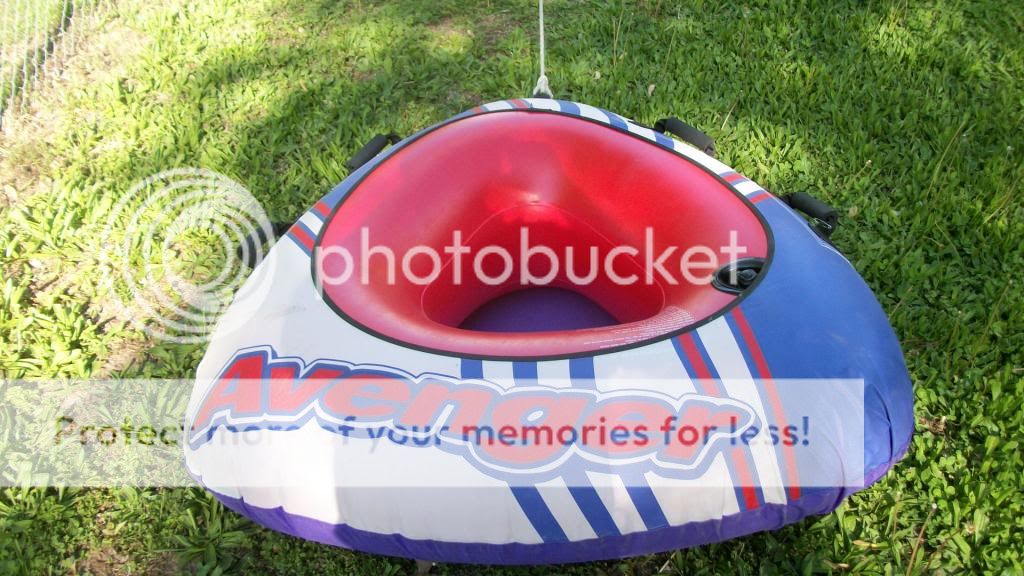Re: 1971 17' Invader Tri-Hull Restoration, The Madness Begins
Saturday I ended up working out in the yard and boy did I have a bunch to do. I was too busy last fall so there was the front yard to rake and then mow. The back yard just got leaf and twig mulch however.
The last reports I had to do came this morning after breakfast (the Captain has gone back home to help our eldest get ready for showing their house).
I managed to run by a dollar store and picked up a turtle shaped dog squeaky toy on the way to the shop. Why you ask? Will let me tell y'all.
To refresh your memories, when we last left our hero (not really, just grew up watching serial westerns as a kid on Saturday Morning and it sounds better than not), the Blazer had lost its timing chain and an timing set was bought and installed. The bolts were left loose on the fan and the water pump, and it ran horrible.
No matter what I did to time it, it wouldn't time where I thought it should be. I walked the plug wires around and it still didn't work.
Not being able to get to anything either was becoming a real headache too. I normally put a soda straw in the No. 1 cylinder to look for TDC, but they have literally poured 6 gallons into a 5 gallon bucket under the hood and I know it is even worse with newer vehicles. It times at 0? TDC. You don't have to find absolute TDC as you did years ago as the ECM will adjust for any minor error in timing. I have degreed in old small blocks and know the drill all to well.
I was afraid that I hadn't gotten the timing marks correct so I tore into it again. The old girl has over 250K miles on it and I was going to have to do valve guide seals again, so I ended up taking the valve covers off too.
As you all well know, the piston travels up twice per revolution, once on the exhaust stroke (Intake valve closed, Exhaust valve open) and once on the compression stroke (both valves closed), so finding the compression stroke with a gauge is the way to go when you can't use a soda straw. I have heard of people using a screwdriver, but I think that's just asking for trouble.
My cylinder gauge lens has so many scratches in it you cant hardly read it anymore so I robbed the hose years ago for pumping up the cylinders to do valve guide seals. I took the squeaky out of the turtle and used a short piece of clear vinyl tubing and a short piece of hose and attached it to the air fitting where the gauge once was. I inserted it into cylinder #1 and turned the crank. I know with the covers off, all I'd have to do is to spin the push rods to see if either valve is compressed, meaning there was a cam lobe pushing one up to open the valve, but I tend to be a doubting Thomas. Did the light realy shut off when I closed the refrigerator door thing (more OCD).


I turned the crank listening to the squeaky on the compression stroke, watching the timing marks and when they were both up, the crank and the cam sprockets, the squeaky stopped squeaking meaning the piston was at the end of its travel or close to it (remember, it only has to be close with the ECM). Please see attached Squeaky Toy Photo above (Sorry, no sound effects. You will have to imagine or make them yourselves).

Guess what I found? I cut the top off of an old cap to dimonstrate the rotor position and marked the #1 cylinder position on it:


The next photo has a screw driver pointing at #1 on the cap:

I bought the old girl used, but apparently someone had had the distributor out and put it back in a tooth off. With a sloppy chain, they probably had to to get it to time.
I would have pulled the distributor and changed it, but there are a couple of non-boaters (who will never see this post) at work and I wanted to show it to them before I put it back right.
With the Internal audit next week, I won't have much time to work on it, but while I have the tappet covers off, I am going to to the seals and it will be evenings and maybe some this next weekend (I am still driving the soccer mom van for now).
So with that said, I still should be able to get back on the boat REAL soon, I hope!










































